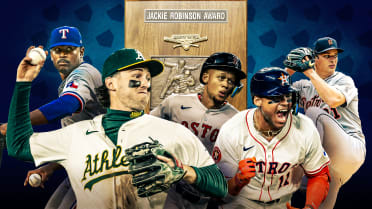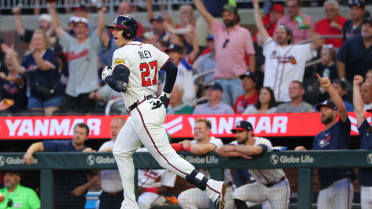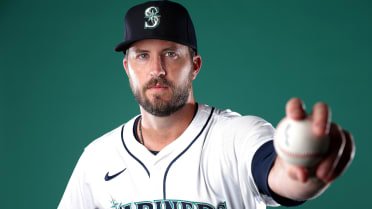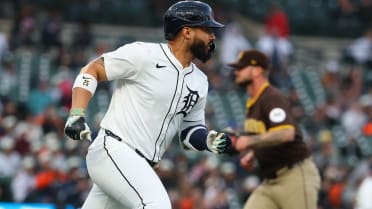NEW YORK -- Take a glance back at recent offseason rumors, and it becomes easy to doubt the Mets’ opinion of Brandon Nimmo. Nimmo began surfacing in public trade rumors since shortly after he broke into the big leagues in 2016; his name has been a fixture in them each winter since.
This offseason, Nimmo has been linked to the Pirates, who were, are or might still be interested in swapping him for Starling Marte. Marte, on paper, could be an upgrade to the Mets’ center-field situation. But is he in reality? A deeper look at Nimmo is in order.
What Nimmo is at his best
There may not be a more underrated Major League hitter than Nimmo. Since the start of the 2017 season, his .391 on-base percentage ranks ninth among players with at least 1,000 plate appearances, behind names like Mike Trout, Aaron Judge and Christian Yelich. Nimmo might not feature the same type of power as those players, but his 17 home runs in 2018 signal that he can muscle a ball when he needs to. Defensively, Nimmo grades slightly below average in center field and roughly average at the corners, though it’s not for a lack of athleticism. Nimmo’s sprint speed is in the 84th percentile in Major League Baseball, according to Statcast data.
The effects of injury
Dragging down the above numbers is Nimmo’s performance last April and May, when he played through a bulging disk in his neck. What affected Nimmo most significantly, he said toward the end of the season, was the lack of work he was able to do before and after games. Typically when slumping, Nimmo will take as many as 200 swings per day in an effort to right himself. As Nimmo attempted to play through his neck injury in April and May, that number fell to around 50.
“I was trying to just battle and just not make excuses,” Nimmo said in September. “I don’t want to be the guy that makes excuses, and so I was like, ‘You know what? You can get through this.’ I just tried to help the team out the best I could. But I think you go back and look at those numbers … I just feel like I either walked or got out during that time. Now, it’s a lot different.”
What Nimmo can still be going forward
Being healthy in September, Nimmo said, allowed him to be “night-and-day” different from earlier in the season. Nimmo reached base at a .430 clip in the season’s final month, hit five of his eight homers and posted a .995 OPS. In short, he looked like the player he was throughout the 2018 season, when he established himself as the Mets’ regular leadoff hitter and center fielder.
“To contribute the way that I did, it’s definitely more confidence and just more of reinforcing that … there was something seriously wrong [in April and May],” Nimmo said. “That doesn’t mean that I’m never going to go in a slump again, but I’m fully prepared for that.”
What the Mets’ other options are
On paper, Nimmo is clearly a superior offensive player than Jake Marisnick, whom the Mets acquired in December to serve as his backup in center. Marisnick is clearly the better defender. Together, they offer the Mets a bit of both.
The question is whether the Mets might still consider trading Nimmo for a player like Marte, who has shown flashes of superstardom but is 31 years old with declining defensive numbers, a lower OPS than Nimmo the last three seasons and a salary about six times higher. The Mets have at least been curious enough to talk to Pirates officials, which has been Brodie Van Wagenen’s MO as general manager: never say no to a conversation. But a deal has long seemed unlikely.
Assuming one does not happen, it will be up to Nimmo to thrive as the Mets’ starting center fielder in 2020 -- something he feels he’s now healthy enough to do.
“It’s a totally different feeling when you’re coming to the field and you’re competing against somebody [as opposed to your body],” Nimmo said. “I like to think of it as it’s a pretty fair fight.”
Senior Reporter Anthony DiComo has covered the Mets for MLB.com since 2007.




